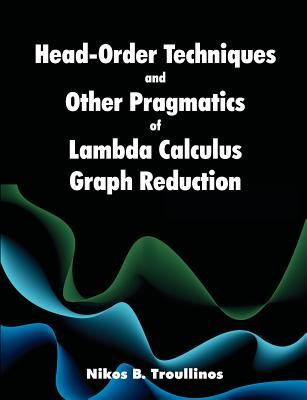
- We will send in 10–14 business days.
- Author: Nikos B Troullinos
- Publisher: Dissertation.Com
- Year: 2011
- Pages: 250
- ISBN-10: 1612337570
- ISBN-13: 9781612337579
- Format: 18.9 x 24.6 x 1.4 cm, minkšti viršeliai
- Language: English
- SAVE -10% with code: EXTRA
Head-Order Techniques and Other Pragmatics of Lambda Calculus Graph Reduction (e-book) (used book) | bookbook.eu
Reviews
Description
Available in Paperback Available in eBook editions (PDF format) Institution: Syracuse University (Syracuse, NY, USA) Advisor(s): Prof. Klaus J. Berkling Degree: Ph.D. in Computer and Information Science Year: 1993 Book Information: 248 pages Publisher: Dissertation.com ISBN-10: 1612337570 ISBN-13: 9781612337579 View First 25 pages: (free download) Abstract The operational aspects of Lambda Calculus are studied as a fundamental basis for high-order functional computation. We consider systems having full reduction semantics, i.e., equivalence-preserving transformations of functions. The historic lineage from Eval-Apply to SECD to RTNF/RTLF culminates in the techniques of normal-order graph Head Order Reduction (HOR). By using a scalar mechanism to artificially bind relatively free variables, HOR makes it relatively effortless to reduce expressions beyond weak normal form and to allow expression-level results while exhibiting a well-behaved linear self-modifying code structure. Several variations of HOR are presented and compared to other efficient reducers, with and without sharing, including a conservative breadth-first one which mechanically takes advantage of the inherent, fine-grained parallelism of the head normal form. We include abstract machine and concrete implementations of all the reducers in pure functional code. Benchmarking comparisons are made through a combined time-space efficiency metric. The original results indicate that circa 2010 reduction rates of 10-100 million reductions per second can be achieved in software interpreters and a billion reductions per second can be achieved by a state-of-the art custom VLSI implementation.
EXTRA 10 % discount with code: EXTRA
The promotion ends in 23d.07:56:45
The discount code is valid when purchasing from 10 €. Discounts do not stack.
- Author: Nikos B Troullinos
- Publisher: Dissertation.Com
- Year: 2011
- Pages: 250
- ISBN-10: 1612337570
- ISBN-13: 9781612337579
- Format: 18.9 x 24.6 x 1.4 cm, minkšti viršeliai
- Language: English English
Available in Paperback Available in eBook editions (PDF format) Institution: Syracuse University (Syracuse, NY, USA) Advisor(s): Prof. Klaus J. Berkling Degree: Ph.D. in Computer and Information Science Year: 1993 Book Information: 248 pages Publisher: Dissertation.com ISBN-10: 1612337570 ISBN-13: 9781612337579 View First 25 pages: (free download) Abstract The operational aspects of Lambda Calculus are studied as a fundamental basis for high-order functional computation. We consider systems having full reduction semantics, i.e., equivalence-preserving transformations of functions. The historic lineage from Eval-Apply to SECD to RTNF/RTLF culminates in the techniques of normal-order graph Head Order Reduction (HOR). By using a scalar mechanism to artificially bind relatively free variables, HOR makes it relatively effortless to reduce expressions beyond weak normal form and to allow expression-level results while exhibiting a well-behaved linear self-modifying code structure. Several variations of HOR are presented and compared to other efficient reducers, with and without sharing, including a conservative breadth-first one which mechanically takes advantage of the inherent, fine-grained parallelism of the head normal form. We include abstract machine and concrete implementations of all the reducers in pure functional code. Benchmarking comparisons are made through a combined time-space efficiency metric. The original results indicate that circa 2010 reduction rates of 10-100 million reductions per second can be achieved in software interpreters and a billion reductions per second can be achieved by a state-of-the art custom VLSI implementation.


Reviews